Piciformes
Woodpeckers and relatives
John Harshman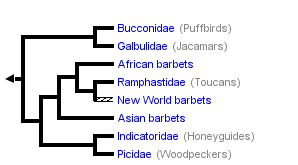


This tree diagram shows the relationships between several groups of organisms.
The root of the current tree connects the organisms featured in this tree to their containing group and the rest of the Tree of Life. The basal branching point in the tree represents the ancestor of the other groups in the tree. This ancestor diversified over time into several descendent subgroups, which are represented as internal nodes and terminal taxa to the right.

You can click on the root to travel down the Tree of Life all the way to the root of all Life, and you can click on the names of descendent subgroups to travel up the Tree of Life all the way to individual species.
For more information on ToL tree formatting, please see Interpreting the Tree or Classification. To learn more about phylogenetic trees, please visit our Phylogenetic Biology pages.
close boxDiscussion of Phylogenetic Relationships
There has been some controversy about whether jacamars (Galbulidae) and puffbirds (Bucconidae) really belong to Piciformes, and they have sometimes been given a separate order, Galbuliformes. However, recent molecular and morphological analyses have confirmed the traditional arrangement (Johansson and Ericson 2003, Mayr et al. 2003, Cracraft et al. 2004).
The barbets (Capitonidae) are not monophyletic, because the toucans (Ramphastidae) lie within them (Sibley and Ahlquist 1990, Lanyon and Hall 1994, Barker and Lanyon 2000, Moyle 2004). Toucans are merely a group of odd, large-billed barbets. This could be handled taxonomically in several ways. The simplest would be to eliminate the family Ramphastidae, submerging it within Capitonidae. But if Ramphastidae is to be maintained, Capitonidae must be dismembered into at least three, perhaps four, separate families. The New World barbets would retain the name Capitonidae. African barbets would become Lybiidae, and Asian barbets would become Megalaimidae, the solution adopted by Sibley and Monroe (1990). Yet another family might be required for the genus Semnornis, the aptly named toucan barbets, which may be more closely related to toucans than to other New World barbets (and this is the reason New World barbets are shown as being possibly non-monophyletic), or Semnornis could be moved inside Ramphastidae.
References
Barker, F. K. and S. M. Lanyon. 2000. The impact of parsimony weighting schemes on inferred relationships among toucans and neotropical barbets (Aves : Piciformes). Mol. Phylogenet. Evol. 15:215-234.
Burton, P. J. K. 1984. Anatomy and evolution of feeding apparatus in the avian orders Coraciiformes and Piciformes. Bulletin of the British Museum (Natural History) 47:331-443.
Cracraft, J., F. K. Barker, M. J. Braun, J. Harshman, G. Dyke, J. Feinstein, S. Stanley, A. Cibois, P. Schikler, P. Beresford, J. Garcia-Moreno, M. D. Sorenson, T. Yuri, and D. P. Mindell. 2004. Phylogenetic relationships among modern birds (Neornithes): Toward an avian tree of life. Pages 468-489 in Assembling the tree of life (J. Cracraft and M. J. Donoghue, eds.). Oxford University Press, New York.
Johansson US, Ericson PGP. 2003. Molecular support for a sister group relationship between Pici and Galbulae (Piciformes sensu Wetmore 1960). J. Avian Biol. 34:185-197.
Lanyon, S.M. and J.G. Hall. 1994. Re-examination of barbet monophyly using mitochondrial-DNA sequence data. Auk 111:389-397.
Mayr, G. 2001. The earliest fossil record of a modern-type piciform birds from the late Oligocene of Germany. J. Ornithol. 142:2–6.
Mayr, G., A. Manegold, and U. S. Johansson. 2003. Monophyletic groups within "higher land birds": Comparison of morphological and molecular data. J. Zool. Syst. Evol. Research 41:233-248.
Moyle, R.G. 2004. Phylogenetics of barbets (Aves : Piciformes) based on nuclear and mitochondrial DNA sequence data. Molecular Phylogenetics and Evolution 30:187-200.
Prum, R.O. 1988. Phylogenetic interrelationships of the barbets (Aves: Capitonidae) and toucans (Aves: Ramphastidae) based on morphology with comparisons to DNA-DNA hybridization. Zoological Journal of the Linnaean Society 92:313-343.
Short, L. and J. Horne 2001. Toucans, Barbets, and Honeyguides: Ramphastidae, Capitonidae and Indicatoridae. Bird Families of the World. Oxford University Press, Oxford, New York.
Sibley, C. G., and J. A. Ahlquist. 1990. Phylogeny and classification of birds, Yale U. Press, New Haven.
Sibley, C. G., and B. L. Monroe Jr. 1990. Distribution and taxonomy of birds of the world, Yale University Press, New Haven.
Simpson, S. F. and J. Cracraft. 1981. The phylogenetic relationships of the Piciformes (Class Aves). Auk 98:481–494.
Webb, D. M. and W. S. Moore. 2005. A phylogenetic analysis of woodpeckers and their allies using 12S, Cyt b, and COI nucleotide sequences (class Aves; order Piciformes). Mol. Phylogenet. Evol. 36:233–248.
Title Illustrations

| Scientific Name | Melanerpes formicivorus |
|---|---|
| Location | Rancho San Antonio Preserve, California, USA |
| Specimen Condition | Live Specimen |
| Source | Woodpecker |
| Source Collection | Flickr |
| Image Use |
 This media file is licensed under the Creative Commons Attribution-NonCommercial-NoDerivs License - Version 2.0. This media file is licensed under the Creative Commons Attribution-NonCommercial-NoDerivs License - Version 2.0.
|
| Copyright | © 2006 Greg Cope |
| Scientific Name | Megalaima nuchalis |
|---|---|
| Specimen Condition | Live Specimen |
| Source | 五色鳥 Muller's Barbet Megalaima oorti |
| Source Collection | Flickr |
| Image Use |
 This media file is licensed under the Creative Commons Attribution-NonCommercial-ShareAlike License - Version 2.0. This media file is licensed under the Creative Commons Attribution-NonCommercial-ShareAlike License - Version 2.0.
|
| Copyright | © 2007 Changhua Coast Conservation Action 台灣水鳥研究 |
| Scientific Name | Pteroglossus viridis |
|---|---|
| Location | captive at Audubon Zoo, New Orleans |
| Specimen Condition | Live Specimen |
| Source | green aracari |
| Source Collection | Flickr |
| Image Use |
 This media file is licensed under the Creative Commons Attribution-NonCommercial-ShareAlike License - Version 2.0. This media file is licensed under the Creative Commons Attribution-NonCommercial-ShareAlike License - Version 2.0.
|
| Copyright | © 2005 Alan Wolf |
About This Page
Correspondence regarding this page should be directed to John Harshman at
Page copyright © 2008
 Page: Tree of Life
Piciformes. Woodpeckers and relatives.
Authored by
John Harshman.
The TEXT of this page is licensed under the
Creative Commons Attribution-NonCommercial License - Version 3.0. Note that images and other media
featured on this page are each governed by their own license, and they may or may not be available
for reuse. Click on an image or a media link to access the media data window, which provides the
relevant licensing information. For the general terms and conditions of ToL material reuse and
redistribution, please see the Tree of Life Copyright
Policies.
Page: Tree of Life
Piciformes. Woodpeckers and relatives.
Authored by
John Harshman.
The TEXT of this page is licensed under the
Creative Commons Attribution-NonCommercial License - Version 3.0. Note that images and other media
featured on this page are each governed by their own license, and they may or may not be available
for reuse. Click on an image or a media link to access the media data window, which provides the
relevant licensing information. For the general terms and conditions of ToL material reuse and
redistribution, please see the Tree of Life Copyright
Policies.
- First online 14 December 2005
- Content changed 27 June 2008
Citing this page:
Harshman, John. 2008. Piciformes. Woodpeckers and relatives. Version 27 June 2008 (under construction). http://tolweb.org/Piciformes/26411/2008.06.27 in The Tree of Life Web Project, http://tolweb.org/




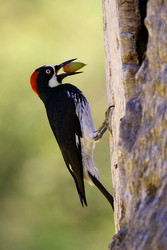
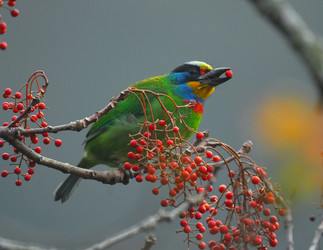
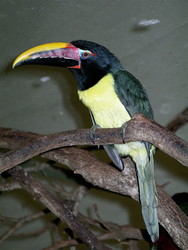

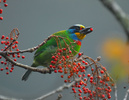



 Go to quick links
Go to quick search
Go to navigation for this section of the ToL site
Go to detailed links for the ToL site
Go to quick links
Go to quick search
Go to navigation for this section of the ToL site
Go to detailed links for the ToL site